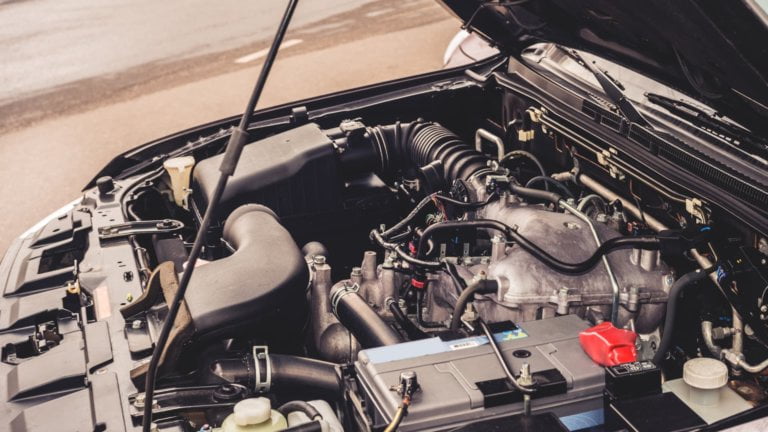DOIP, Cloud Diagnostics, Remote Updating, Connected Car, Cyber Security & Big Data: What does it all mean? Where is it going? How will it impact your business? This blog explains all of these automotive diagnostic terms.
Diagnostics Over Internet Protocol
Let’s start off with DOIP or Diagnostics Over Internet Protocol.
It is a way of saying that a vehicle is not just fitted with a CAN network but that the vehicle is fitted with the capability of transferring a lot more data in a shorter space of time using an ethernet network. DOIP supports data transfer rates up to 100mbps (only 500kbps in CAN).
So, how does this translate to your daily workshop life in carrying out vehicle diagnostics? Unfortunately, DOIP has proven to be very difficult to reverse engineer for use on aftermarket tools. This, alongside the introduction of security gateways, is one of the many reasons why aftermarket diagnostic tools fail to keep up with vehicles built after 2018.
Some people seem to think this is a conspiracy by vehicle manufacturers to block the independent aftermarket from using and developing aftermarket tools and, therefore, blocking them from repairing vehicles outside the dealer network. On a daily basis, I still deal with vehicle manufacturer software development teams, and I also speak to engineering teams trying to reverse engineer this software for use in aftermarket tools, so I feel I have a pretty good understanding of what’s going on from both sides.
One of the reasons for introducing systems like DOIP is that the demand for data has dramatically increased, and the average vehicle infotainment unit now has a demand for gigabytes of data which would take hours to update over a traditional CAN system. DOIP speeds up all diagnostics processes by a factor of 200, and with it, vehicles can use cloud computing and data.

Cloud Computing
Cloud computing powers the world, from streaming services such as Netflix to the translator on your mobile phone; this is all carried out via cloud servers.
You may have heard of IoT or Internet of Things applications that connect all devices in a house which is becoming a reality for most households. Most people probably don’t realise that their mobile phone is, in fact, not smart enough to carry out voice recognition or translation it is actually doing it via a cloud-based computing system like Siri, Alexa and their smart TV.
Vehicle manufacturers are gradually moving towards cloud-based solutions as it also offers a completely un-hackable solution and is pretty much impossible to reverse engineer, as the actual processes that are carried out are cloud-based and not undertaken on the user’s PC. This also means that the manufacturers can update the system or rectify faults instantly, which would previously have taken a roll-out across all their networks in all the diagnostic devices. They can add new chassis numbers daily and have free rein to do what they want instantly inside their cloud platform.
Remote Updates
If you own a late-model Jaguar Land Rover, BMW, Mercedes or even a Tesla, you will already know that updates are now pushed to the vehicle via the infotainment system – called Connected Vehicle – meaning the vehicle is always connected to the internet via an embedded chipset or SIM card. This also means the end user has some interesting phone apps to remotely control their vehicle’s heating, security, and other features; (I have lots of fun with the Tesla app making the car make farting noises when my wife is driving!).
But from the independent aftermarket’s point of view, the most important question we should be asking is about the new R155/R156 or vehicle cyber security legislation that sets out to guarantee the cyber security of vehicles throughout the lifetime of the vehicle. This legislation means that the manufacturers can continue to update the vehicle’s security systems for the vehicle’s life beyond the agreed warranty period.
This leads to some interesting questions about the future of the independent aftermarket’s access to these ‘security-based’ systems. This is a highly political subject, and I must defer to the superior knowledge of my learned colleague Mr Neil Pattemore whose role in the IAAF and other organisations puts him in the best position to enlighten us on the subject.

Big Data
Big data is what it says it is – lots and lots of data accumulated over time, filtered down by an AI or an algorithm to answer almost any question.
Over the time data is collected, many instances of the same event are therefore recorded. For example, in the automotive world, the symptoms leading to a component failure on a vehicle are seen several times, which enables a prediction to be made. Big data uses AI and algorithms to contemplate these situations and come up with an answer; in some instances, this answer isn’t necessarily right or wrong, but this leads to a guided series of functions to check whether it’s right or wrong. The artificial intelligence function puts the right or wrong answers together and adds them to the big data making the answers better in the future.
BTW If you’re not happy with that explanation, please have a look at Wikipedia because it’s a highly complex subject – I hope you’ve got a couple of hours to spare.
For diagnostics and vehicle manufacturers, this means that it will be a lot easier for them preventatively fix problems and guide the technician through to a fix using data from millions of other users and millions of other vehicles. This is not sinister in any way; it makes sense as it’s like having access to a very large card index and being able to access the correct drawer instantly and cross-reference that to any of the faults you or anyone on the rest of the planet has found on a vehicle.
Interestingly, Jaguar Land Rover has a system pre-2018 called Symptoms Driven Diagnostics or SDD which tried to carry out a basic version of big data. SDD works by pulling fault codes, looking at timelines and mileage of the fault re-occurrence and trying to predict, based on these symptoms, where the fault lies in the vehicle. It’s an interesting take on it by Jaguar Land Rover and ahead of its time.
A good example of a fully working cloud-based system is the Hyundai GDS smart system operated globally. GDS smart is a highly sophisticated cloud-based diagnostic system using big data and AI for all parts of the repair process and was launched in 2021. All European manufacturers are either going or have already gone in the same direction.
Jaguar Land Rover has just adopted TOPIX cloud to replace the old Pathfinder diagnostics system; at the time of writing, it’s still a little flaky and, like all these cloud systems, needs a stable high-speed internet connection for it to work properly, but these systems are only going to get more advanced as artificial intelligence comes in to assist with diagnosis.
The Answer
The answer for the aftermarket, unfortunately, is not an easy one.
A very high percentage of independent workshops would like to carry on using their traditional aftermarket diagnostics tools, but they are fast becoming ineffective. Tens of thousands of users in the UK have already turned to OEM or dealer diagnostic solutions giving them faster and more reliable fixes, but at a much higher cost; they often have to change the business plan or specialise to accommodate these changes.
In the next ten years, we will face some of the biggest changes the automotive aftermarket has ever seen, alongside vehicle electrification.
Electrification or not, these changes are here to stay.





